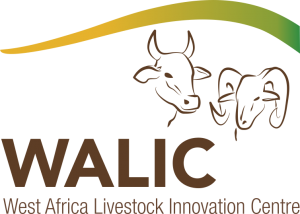
Strategic Plan in Brief
This ten-year strategic plan (2013-2022) for a new livestock innovation centre to serve the West African region, builds on the work of the International Trypanotolerance Centre (ITC). ITC shall hereafter be referred to as the West Africa Livestock Innovation Centre (WALIC).While building on the legacy and achievements of ITC, WALIC will have a broader regional reach and will be recognized as a technical arm of the Economic Community of West African States (ECOWAS) Commission. WALIC will also expand its focus from concentrating mainly on indigenous breeds of cattle, sheep and goats that are naturally tolerant to tsetse-transmitted trypanosomosis.
The strategic plan designed to fit the context and respond to the trends, opportunities and challenges that face the West African livestock sector today was developed through a highly participatory process, conducted throughout the year 2012, in which a large number of partners and stakeholders, mostly from the region, and international experts were active participants.
The vision of WALIC is a vibrant West African livestock sector, which boosts food security and wealth creation while safeguarding the environment. While the mission is to unlock the potential of West Africa’s ruminant livestock sector through innovative partnerships and knowledge-based solutions that empower stakeholders along value chains.
WALIC’s roles will change from being mainly an implementer of livestock research to being a catalyst, facilitator, partnership and knowledge broker; an advocate for more enabling policies and institutions; a resource mobilizer and coordinator. The implementation of many WALIC programmes, projects and activities will be undertaken by carefully selected partners from the member countries, the private sector and civil society, including public-private partnerships.
The stakeholder consultations on the strategy development led to the identification of four Strategic Thematic Areas for WALIC over the next ten years:
- Genetic improvement, conservation and enhanced use of West African livestock
- Capacity development of actors along livestock value chains
- Knowledge management
- Advocacy and Partnership brokerage
To translate the strategic plan into action, WALIC will pay specific attention to the following operational functions:
Priority setting
There will be prioritization within each strategic thematic area, on an ongoing basis, in order to capture the opportunities of the moment based on sound and up- to-date analysis, and also to ensure that annual plans reflect available financial and human resources.
Communications
Effective and strategic communications – both externally with clients, partners and other stakeholders and internally within and between the Board, management and staff – will be essential to WALIC. The Centre will use a wide range of approaches, adopting a variety of communications channels, languages and degrees of sophistication to engage with diverse stakeholder groups in West Africa and around the world.
Partnerships and strategic alliances
The Centre will be small relative to its mandate and thus will heavily depend on effective strategic partnerships to deliver on its broad agenda.
Financing the strategic plan
The challenge will be to match the ideas to donors and to develop them into fundable projects. As it develops work packages within the four themes, the Centre will aim to mobilize US$ 4 million per year by the fifth year, growing to US$ 8 million by the tenth year. The Centre will leverage the voice and influence of ECOWAS and its individual member states to access development funding from national governments as well as from the African Development Bank, IFAD and similar agencies.
Tracking progress, learning and adapting in response to lessons
The Centre will adopt an adaptive monitoring and evaluation (M&E) approach, which focuses on tracking learning and adjusting interventions based on lessons learned.
Identifying and mitigating risks
The major steps in the risk plan will be to: identify critical and non-critical risks; document each risk in depth, using a standard risk analysis form; log all risks and identify their severity; take action to reduce the likelihood of risks occurring; and propose action to reduce the likely impact should the risks become reality.
Governance and management of the programme
A one-tier governance structure comprising an independent Board will be adopted. The Board will be broad-based and representative, comprising of 13 to 18 persons. Each member will serve a term of three years, with one possible renewal. The Board Chair will be elected from among the membership. Board business will be carried out by relevant committees and by the full Board as determined by the Board itself.
The main functions of the Board are:
- appointment of the Director General;
- Policy formulation and implementation oversight;
- Approval of revised strategic and implementation plans, annual work plans and budgets;
- Approval of annual financial and audit statements; and
- Risk management oversight.
Click here to view the PDF French Version
